Finding Balance When Home is Your Office
Habits for creating healthy boundaries while working remotely during COVID-19
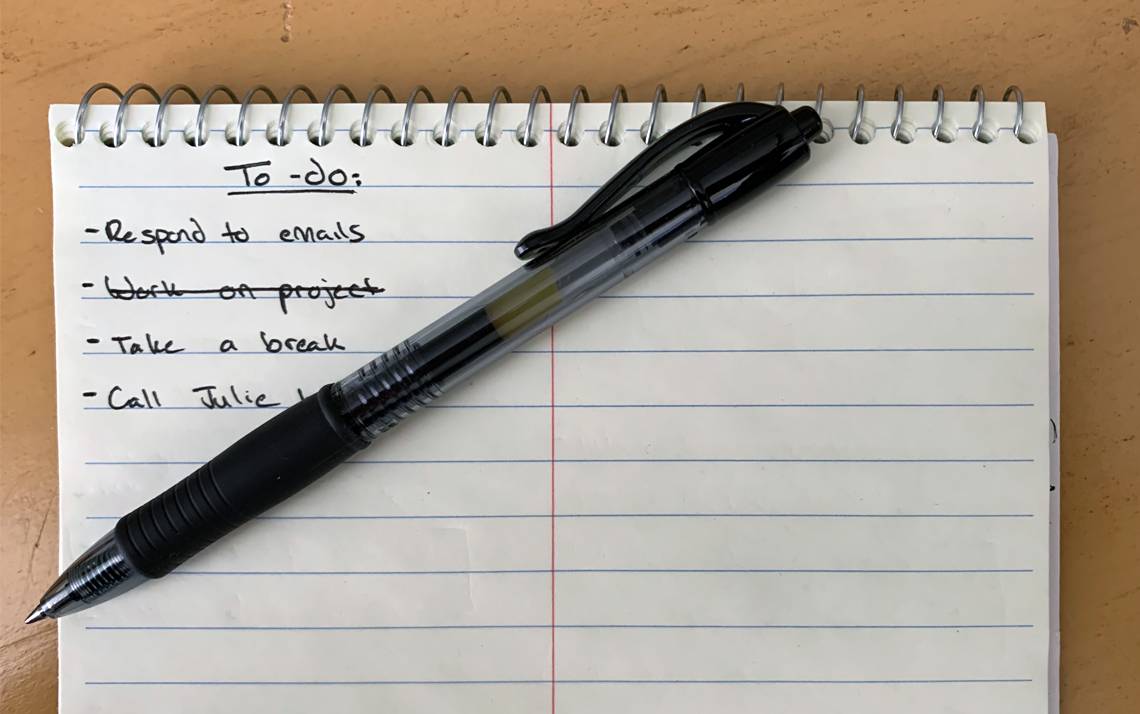
Margo Lakin has not changed her morning routine since she started working from home on March 16.
Lakin takes a shower, dresses for the day and applies make-up before settling down at her dining room table at 8 a.m. to work.
“My routine puts me in the work frame of mind,” said Lakin, communications specialist for Duke Theater Studies and Dance Program. “Keeping the same habits as if I were going to the office helps me mentally make that transition from being at home to starting work.”
Without a transition between home and work, maintaining boundaries at home can be tricky during the statewide to stay at home order due to the COVID-19 pandemic.
But Dr. Beth-Anne Blue, assistant director of Dukes Personal Assistance Service, said taking actions to separate work and personal time will reduce burn out and fatigue, help concentration and creativity and limit mood swings.
“Now, more than ever, people need to put up boundaries that protect their time at work and protect their time at home,” Blue said. “Balancing the two can help manage your stress and enjoy time with the people you love.”
Here are some actions you can take at home:
Communicate your needs
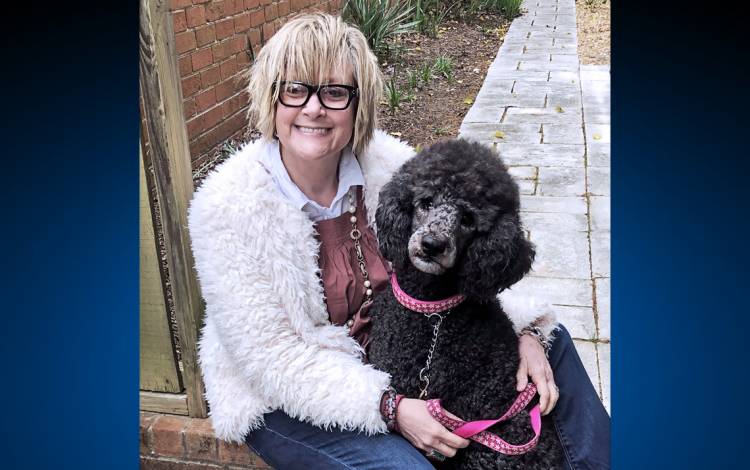
After a day of listening to and talking with clients, Blue needs some time to decompress before spending quality time with her husband. So when her work day ends, she goes to another room with her poodle, Paisley.
For 30 minutes, Blue sits in silence and enjoys quiet time with her dog.
Blue suggests communicating your self-care needs and establishing schedules and rules with people at home when you’re in work mode. For example, if you are on a meeting, close the door or write a sticky note to signal that you can’t be disturbed.
“Communicating what you need and when you’re working is important,” Blue said.
Designate a workspace
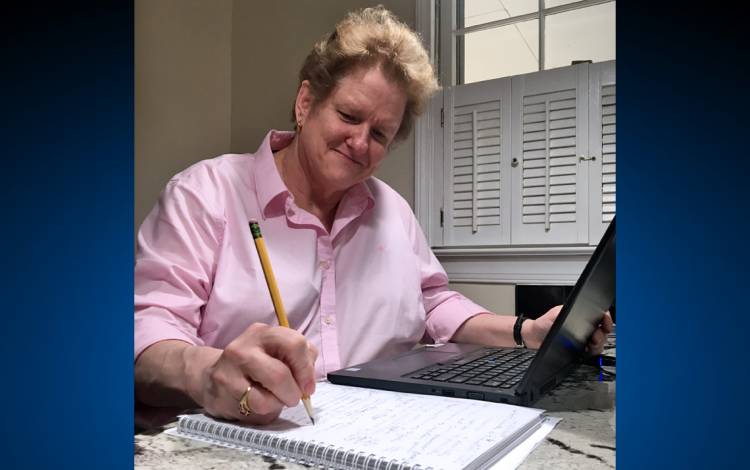
When she was considering where to set up her home work station, Joy Birmingham made sure she picked a spot that was not where she typically relaxes. She set up her laptop, books and work bag on a corner of her kitchen table.
Birmingham, assistant director of leadership and professional development for Duke Learning & Organization Development (L&OD), recommends choosing a place with natural light, few distractions and space to spread out.
“Your new space doesn’t have to mirror your desk at work,” Birmingham said. “What’s important is to have a defined space to work. That way, when you step away, it feels like you’re leaving the office.”
Keep a regular work schedule
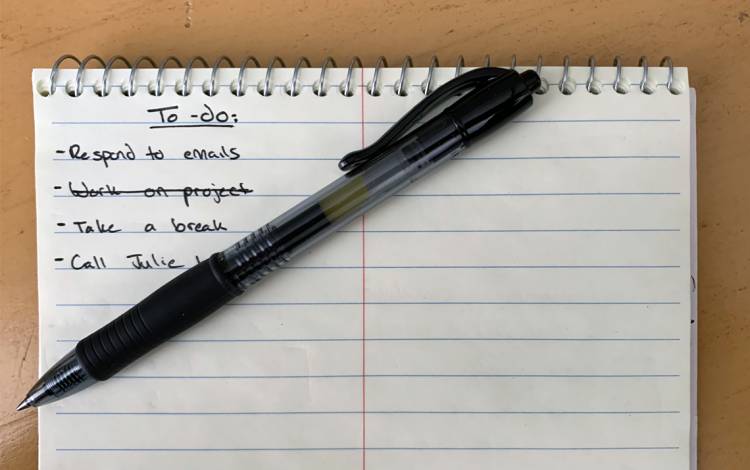
Working remotely can blur the lines between work and personal time, leading to longer days in work mode.
Blue recommended two strategies to avoid working longer than typical hours. Work as close to the same start and end times as you did in the office, allowing time for lunch. If a position allows, unplug from technology outside of work hours as much as possible.
“Having strict beginnings and endings to the day are critical to maintaining boundaries,” Blue said. “They help you maintain your focus when you’re working and rest during off hours because your mind doesn’t feel like it’s in two places at once.”
Birmingham, assistant director of leadership and professional development for L&OD, works 8 a.m. to 5 p.m. and ends her day the same way: she writes a to-do list for the next day.
“Establish a final task, like sending an email,” she said. “You can also put a calendar reminder to end the day, so you get a notification to stop working.”
Take breaks

Without a coworker or office environment, you may find yourself sitting for several hours at a time without a break.
Jonathan Bae, associate chief medical officer for Patient Safety & Clinical Quality and mental and emotional well-being co-convener for Healthy Duke, said taking breaks is essential to work-life health.
Taking a walk, enjoying lunch away from the computer, talking with friends and limiting exposure to negative news can help you recharge and be more focused when returning to work.
“Your mental health and performance are going to suffer when you’re in a state of continuous work or stress,” Bae said. “Take moments to stop and rest.”
Melissa Keeney takes a mid-morning or mid-afternoon break to occasionally focus on art and music. She’s played guitar nearly her entire life and paints brightly colored canvases.
“Visual art is a very meditative process,” said Keeney, program assistant for Duke Campus Farm. “I don’t have a vision in mind. I find that when I give my mind a break to roam that I’m much more efficient when I return to work after a break.”
Pack up your materials
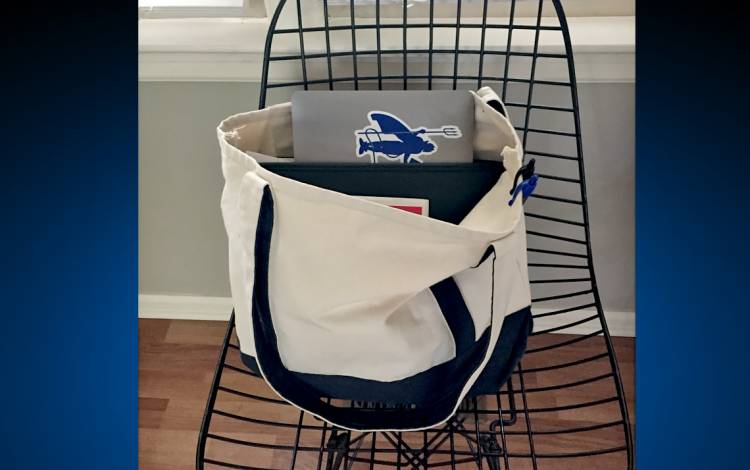
Like her morning routine, Margo Lakin, the communications specialist for Duke Theater Studies and Dance Program, ends her workday at home as if she is on campus.
She gathers up her laptop, notebook and pens and packs them in her tote bag. She moves the bag from her work area in the dining room and puts it out of sight in the guest room.
“It does seem a bit excessive, but it works for me to separate my home from my office,” Lakin said. “My home feels like a space where I can relax when my work computer is away.”
In this video, J. Bryan Sexton, associate professor for Duke Psychiatry & Behavioral Sciences, shares how expressing gratitude can mitigate stress.
We ask for your help as we work to share the proactive and extensive work being done by all Duke community members during the COVID-19 outbreak. Please share ideas, shout-outs and photographs with us here or write us at working@duke.edu.